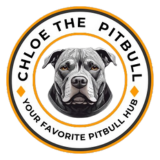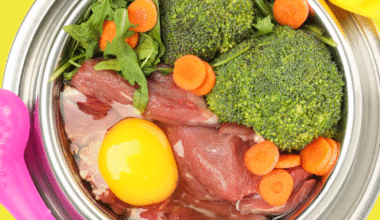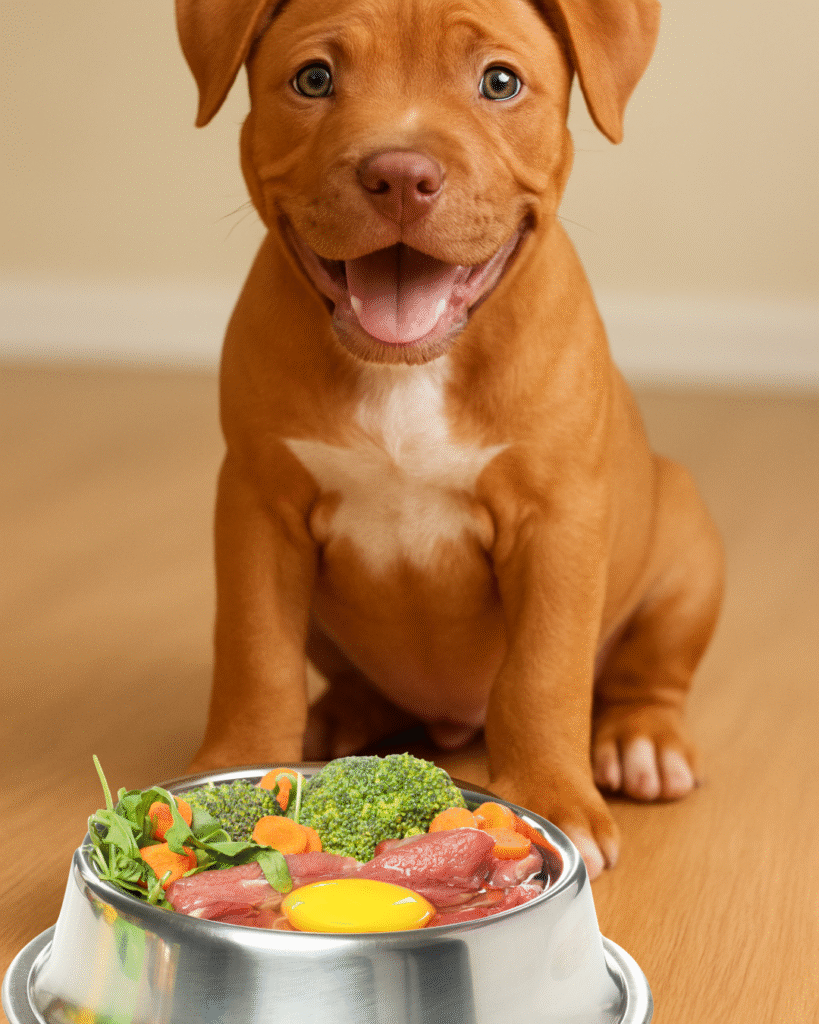
Ever looked at your pit bull’s bowl and wondered, “Am I really giving them everything they need to thrive?” You’re not alone. Feeding a pit bull isn’t as simple as scooping kibble into a dish—these strong, energetic, and affectionate dogs have unique nutritional needs that fuel their muscles, protect their joints, and keep their shiny coats glowing.
Whether you’re a brand-new pit bull parent or you’ve shared years with your loyal companion, knowing exactly what belongs on their plate can feel overwhelming. That’s why we’ve created the Ultimate Pitbull Feeding Checklist—a clear, comprehensive guide to help you nourish your pup through every stage of life, from bouncy puppyhood to golden senior years. Let’s dive in and make sure your best friend’s mealtime is as healthy and balanced as they deserve.
Why a Pitbull Feeding Checklist Matters
Every pit bull parent wants their pup to live a long, healthy, and energetic life. But the truth is, without a structured Pitbull Feeding Checklist, it’s easy to make mistakes that can affect your dog’s health. Unlike some breeds, pit bulls are muscular, high-energy dogs that require balanced nutrition to maintain strength, agility, and vitality.
One of the biggest reasons a Pitbull Feeding Checklist is so valuable is because it prevents guesswork. New pit bull owners often ask, “Am I feeding enough? Too much? The right foods?” On the other hand, seasoned owners sometimes overlook the fact that their senior pit bulls need adjustments in portion sizes and nutritional balance as they age. Having a checklist provides consistency and peace of mind, ensuring no essential nutrient is overlooked.
Pit bulls also tend to have sensitive stomachs and skin conditions that can flare up with poor-quality diets. A well-thought-out feeding checklist helps avoid common mistakes such as overfeeding, excessive treats, or feeding human foods that are unsafe for dogs. With obesity being one of the most common issues among pet dogs, following a structured feeding plan ensures your pit bull stays lean and healthy.
By sticking to a Pitbull Feeding Checklist, you’re not just feeding your dog—you’re supporting their overall well-being, boosting their immune system, protecting their joints, and giving them the best quality of life possible. Think of it as the roadmap to mealtime success, whether you’re raising a rambunctious puppy, managing a strong adult, or caring for a beloved senior pit bull.
Pitbull Feeding Basics—The Core Checklist
When it comes to building the foundation of a healthy diet, the Pitbull Feeding Checklist starts with the basics. Every pit bull, regardless of age, needs a balance of protein, fats, carbohydrates, vitamins, and minerals to thrive. Let’s break down the essentials:
- High-quality protein: Pit bulls are muscular dogs, which means they need protein-rich meals. Look for sources like chicken, beef, lamb, turkey, or fish. Protein builds muscle, supports repair, and keeps energy levels high.
- Healthy fats: Essential fatty acids, especially omega-3s, keep your pit bull’s coat shiny and support joint and brain health. Fish oil, flaxseed, and certain meats are excellent choices.
- Complex carbohydrates: Foods like brown rice, oats, or sweet potatoes provide steady energy without spiking blood sugar. Avoid fillers like corn or soy, which are harder to digest.
- Vitamins & minerals: Vegetables such as spinach, carrots, and pumpkin can naturally supply important micronutrients. In some cases, supplements may be needed, but always consult your vet first.
- Fresh water: Often overlooked but essential, water should be refreshed several times a day. Hydration supports digestion, joint health, and overall energy.
For new pit bull owners, sticking to these basics ensures your pup gets the nutrients needed for growth and strength. For longtime pit bull lovers, revisiting this Pitbull Feeding Checklist helps you make sure you’re not missing anything important—especially as your dog’s needs evolve over time.
Remember, feeding isn’t just about filling the bowl. By carefully checking off these essentials daily, you’ll be giving your pit bull the best possible foundation for health and happiness.
To discover a complete guide on feeding your Pitbull, click Read More
Feeding by Life Stage
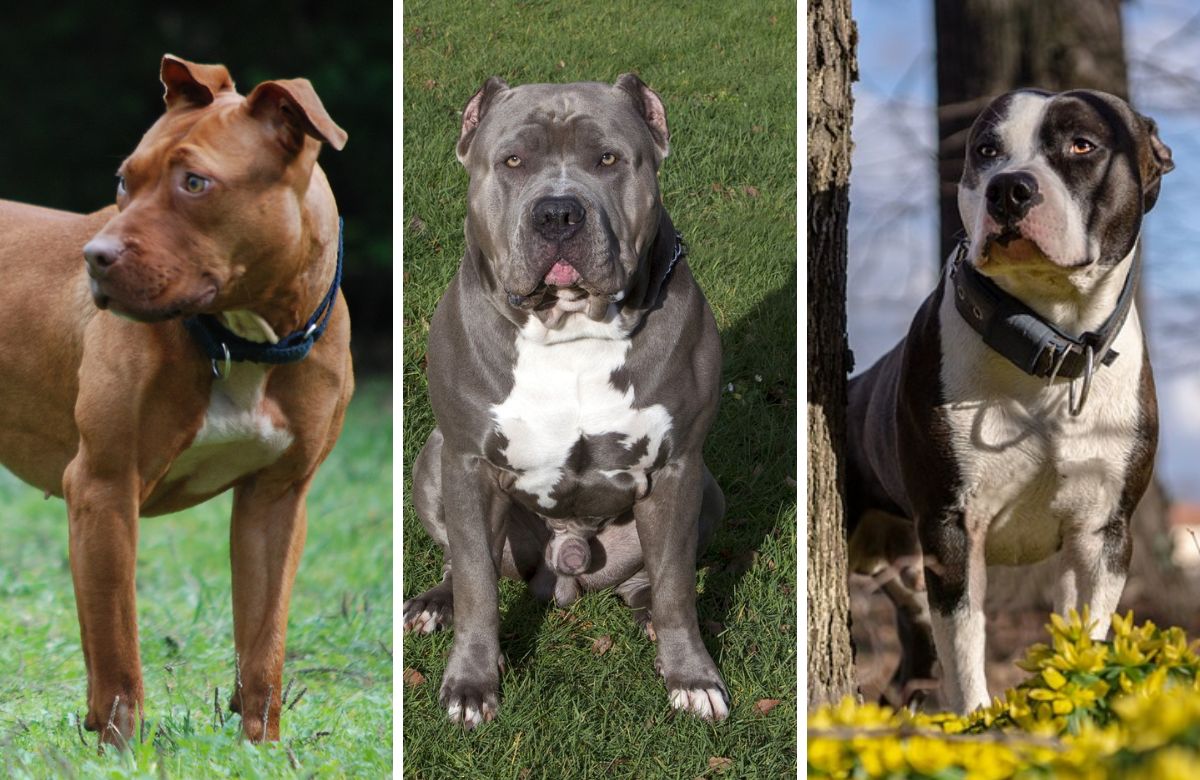
No two pit bulls are the same, and age plays a major role in what goes on their plate. A strong Pitbull Feeding Checklist should adapt to your dog’s life stage, from playful puppyhood to the golden senior years.
Puppies
Pit bull puppies grow quickly, developing strong bones and muscles in a short period of time. They need a protein-rich diet with more frequent meals, typically three to four times per day. Their checklist should emphasize lean meats, healthy fats, and easily digestible carbs. Avoid table scraps and stick to consistent, portioned meals to support steady growth without overfeeding.
Adults
By the time your pit bull reaches adulthood (12–18 months), it’s time to shift to a maintenance diet. Adult pit bulls require balanced meals that fuel their energy without leading to weight gain.
Portion control becomes critical; too much food can lead to obesity, while too little can reduce muscle mass. An adult Pitbull feeding checklist should include lean proteins, complex carbs, and plenty of hydration, paired with daily exercise for best results.
Seniors
Older pit bulls often slow down, which means they don’t burn calories as quickly. Their checklist should include fewer calories but remain nutrient-dense to support joint health, mobility, and immunity. Foods enriched with glucosamine and omega-3 fatty acids are especially beneficial. Softer foods may also be helpful for seniors with dental challenges.
By tailoring your Pitbull Feeding Checklist to each life stage, you’re ensuring your dog’s nutritional needs are met from puppyhood through senior years, giving them the strength, energy, and comfort they deserve at every step.
Foods to Avoid
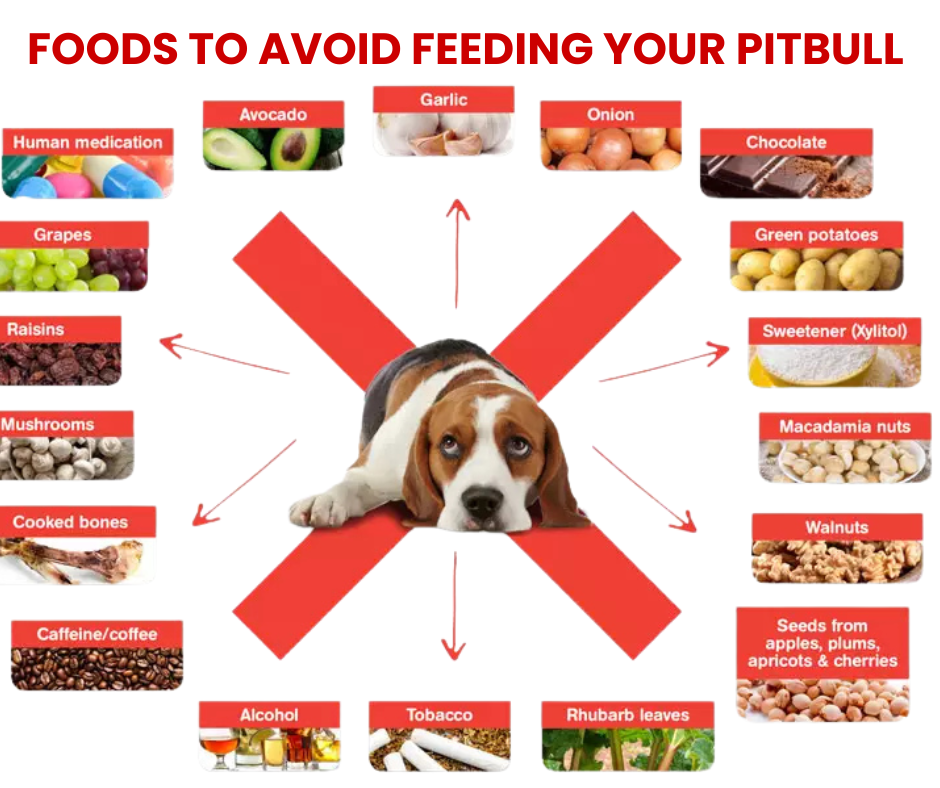
While building a strong Pitbull Feeding Checklist, it’s just as important to know what not to feed. Some foods that seem harmless to humans can be dangerous even toxic for pit bulls. Here are the key items to avoid:
- Chocolate: Contains theobromine, which is toxic to dogs and can cause vomiting, tremors, and even seizures.
- Onions and garlic: Can damage red blood cells, leading to anemia.
- Grapes and raisins: Known to cause kidney failure in dogs.
- Cooked bones: Splinter easily and can cause choking or internal injuries.
- High-fat greasy foods: Can lead to pancreatitis, obesity, and digestive distress.
- Too many treats: Excessive snacking leads to weight gain and nutritional imbalances.
For new pit bull owners, it can be surprising how many “people foods” are unsafe for dogs. Long-time pit bull lovers may already know these risks, but it’s worth reinforcing especially when caring for senior pit bulls who may have more sensitive digestive systems.
In addition to these dangerous items, be cautious with processed dog foods that contain artificial preservatives, fillers, or low-quality ingredients. A strong Pitbull Feeding Checklist should prioritize whole, natural foods and avoid anything that can harm your pup’s health in the short or long term.
Remember: what you leave out of your pit bull’s bowl is just as important as what you put in. By avoiding these foods, you’ll protect your dog from unnecessary risks and keep mealtimes safe and nourishing.
Click here to discover foods to avoid and the best ways to feed your Pitbull.
Sample Pitbull Feeding Checklist
Having an easy-to-follow Pitbull Feeding Checklist takes the guesswork out of mealtime. Whether you’re a first-time owner or have cared for pit bulls for years, a simple daily routine ensures your pup gets everything they need to thrive.
Here’s a sample checklist you can adapt for your dog’s age, weight, and activity level:
Daily Feeding Checklist
- 1–2 servings of lean protein (chicken, beef, turkey, fish)
- 1 portion of complex carbohydrate (brown rice, oats, sweet potato)
- Healthy fat source (fish oil, flaxseed, coconut oil)
- Fresh vegetables or fruit (carrots, spinach, blueberries, pumpkin)
- Measured serving size adjusted to age, weight, and activity
- Clean water bowl refilled at least twice daily
- Limited healthy treats, no more than 10% of daily calories
This kind of checklist makes feeding easier for new pit bull owners who are still learning about nutritional balance. For experienced owners, it serves as a reminder to stay consistent and not fall into the trap of overfeeding or offering too many extras. Senior pit bull parents can also use the checklist to ensure their older pups get softer, joint-supporting foods without excess calories.
Consider printing or downloading this checklist and keeping it near your dog’s feeding area. With a clear routine in place, you’ll know your pit bull is always getting the right mix of nutrients for health, energy, and longevity.
Click download to access free checklist for your Pitbull
Extra Tips from Experienced Pit Bull Parents

Even with a solid Pitbull Feeding Checklist, there are extra strategies that make mealtime more effective and enjoyable for both you and your pitbull.
Experienced pit bull owners often swear by these practical tips:
- Stick to a schedule: Feed your pit bull at the same times each day to regulate digestion and avoid overeating.
- Measure portions: Use a measuring cup instead of “eyeballing” to prevent underfeeding or overfeeding.
- Mix kibble with fresh food: Adding lean meat, vegetables, or a spoonful of pumpkin to kibble boosts flavor and nutrition.
- Rotate proteins: Switching between chicken, beef, lamb, and fish can help avoid food sensitivities and keep meals interesting.
- Introduce supplements wisely: Omega-3s, glucosamine, and probiotics can support joint, skin, and digestive health, but always consult your vet first.
- Watch weight changes: Pit bulls can gain weight quickly if portions aren’t monitored, which puts strain on joints and organs.
- Keep it consistent: Sudden food changes can upset digestion, so make adjustments gradually.
For new pit bull owners, these tips make feeding less stressful and more structured. For senior pit bull parents, they can help manage weight, mobility, and digestion challenges that arise with age.
The goal isn’t just to feed your pitbull it’s to fuel them in a way that supports their unique build, energy, and lifestyle. By pairing your Pitbull Feeding Checklist with these tried-and-true tips, you’ll keep your pup thriving at every stage of life.
Conclusion
Feeding your pit bull isn’t just about keeping their belly full it’s about fueling their energy, protecting their health, and giving them the best chance at a long, happy life.
With this Pitbull Feeding Checklist in hand, you’ll feel confident that every meal you serve is setting your pup up for strength, vitality, and plenty of tail wags.
